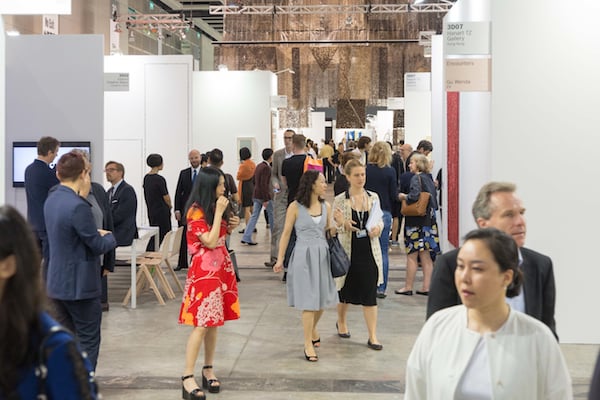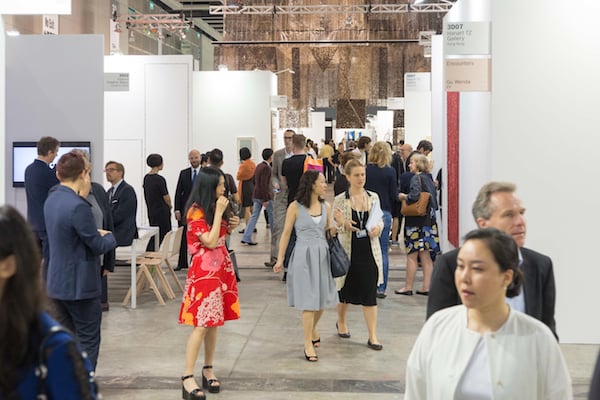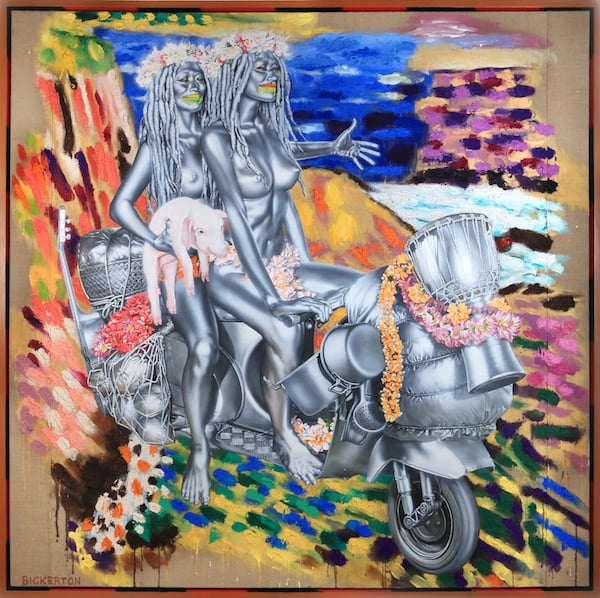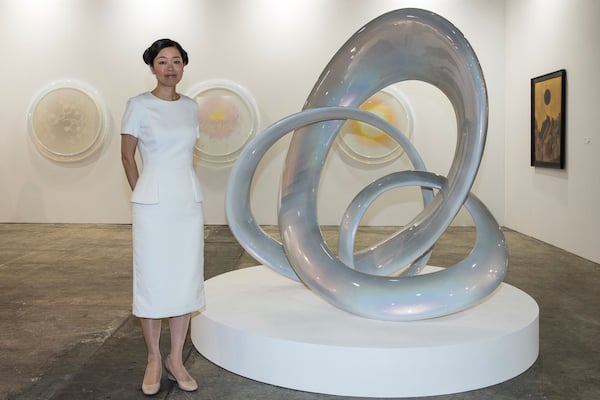Analysis
Art Basel in Hong Kong Fulfills Its Destiny
It is now a proper and mature contemporary art fair in only its second edition.

It is now a proper and mature contemporary art fair in only its second edition.

Benjamin Genocchio

What a difference a year makes. The venue is the same, the number of participating galleries is commensurate, and yet Art Basel Hong Kong’s second edition looks and feels completely different. It has grown up very fast and transformed in the process from a regional art trade show into a proper, mature international art fair.

Photo: Courtesy Art Basel in Hong Kong.
This is glad news for those invested in the idea of Hong Kong as the center for the contemporary art trade in this part of the world. Hong Kong, you could say, has finally fulfilled its destiny, with Art Basel as the platform to leverage the city’s competitive advantages as an ideal trans-continental shipping point for art, with no tax and scant import and exports controls.
The change in the fair is most visible in two overlapping areas. Firstly, the focus and overall quality of the individual gallery booths. Western dealers have thankfully stopped trying to second-guess and please Asian buyers and gone back to basics, simply bringing first rate examples of the work of artists they represent. Meanwhile the Asian galleries have also dramatically lifted the level of their presentations, no doubt to compete with their western colleagues. The end result all around is a much better fair.
The other, seemingly obvious area of difference this year is in the widespread presentation in both Asian and Western galleries of major, individual standout works, basically pieces of great impact and power that wow visitors. This has long been a hallmark of the best art fairs, where dealers consciously source signature works for a select group of high-end buyers. Dealers coming to Art Basel here have faith, it seems, that those buyers now want to come to Hong Kong.

Ashley Bickerton, 2 Women on Scooter with Matisse (2014) mixed media on jute, 215 x 215 cm.
Photo: Courtesy Gajah Gallery.
Examples of what I’m talking about are everywhere, so much so that they dominate first impressions following a quick tour through the show. At Gajah Gallery, two enormous and really quite amazing Ashley Bickerton paintings fill an entire wall. At Lehmann Maupin, Hernan Bas’s “The Guru” (2013) has to be among the artist’s greatest works ever, executed on a scale and ambition that demands your attention. It is a portrait of a pretty male figure alone in an exotic tropical landscape—Gauguin meets Mapplethorpe.
Paul Kasmin has a monumental Nyoman Masriadi masterpiece, sold before the fair’s opening for $350,000. Major Zeng Fanzhi works at Gagosian and Acquavella are to die for, each priced in multiples of millions of dollars. Victoria Miro also caught the zeitgeist, bringing Grayson Perry’s Map of Truths and Beliefs (2011), among the biggest, most impressive wool and cotton tapestries by this artist I have ever seen. It’s extremely beautiful.
Pace has an outstanding booth, filled with several masterpieces from their deep bench of Asian (but especially Chinese) artists including Zhang Huan, Song Dong, Yoshitomo Nara, and Li Songsong. Li’s The Garden (2014) is immediately impressive, presenting a delicately wrought landscape in pale, moody colors; the image resembles a field seen through wintery rain. Priced at $480,000, it’s worth every penny.
Sean Kelly proudly and wisely flaunts his latest artist acquisition, Mariko Mori, who was present at the booth alongside her latest sculpture, Renew III (2014), a lovely and sensual fiberglass object on a circular dais. Meanwhile a couple of big, beautiful Jean-Michel Basquiat paintings, at Van de Weghe, flank the entrance to the VIP lounge, as if to signal to collectors that this is now a serious art fair.

Moriko Mori standing beside her Renew III (2014)
Photo: Courtesy MCH Schweiz (Basel) AG.
Among the Asian galleries, as usual Japanese dealers deserve special mention, especially SCAI The Bathhouse, Mizuma, Yamamoto Gendai, and Ota Fine Arts. Local dealer Pearl Lam also has a great, smart booth, blending Asian and Western talent. Two of Jenny Holzer‘s LED light works flashing Chinese characters anchor her display as a metaphor, say, for the growing Asianization of contemporary art. Nearby, Kukje Gallery delivers similarly an elegant pairing of Anish Kapoor’s sculptures with Korean Chung Sang-Hwa’s Minimalist paintings.
Outstanding single-artist presentations at Long March (Xu Zhen) and Hanart TZ (Wenda Gu) integrated throughout the fair make a powerful statement about the new seriousness and professionalism of the participating Asian galleries. This is a dramatic change in the landscape from a few years ago when, in the fair’s previous incarnation as ART HK, Asian galleries were largely quarantined on a separate level, effectively dismissed as inferior. Now the situation is radically reversed, and it’s the Western galleries clamoring for Asian artist talent.
Will the positive momentum prevail? I beleive so, though it is unclear what the impact will be of the shifting of its dates next year from May to March, a decision that the Art Basel organizers believe is better suited to the international art world calendar. The downside of the new dates is the loss of a current, productive synergy with the annual May contemporary art auctions in Hong Kong, and an unfriendly overlap with Art Dubai, another aspiring international art fair.